Blazes around an imperiled hazardous waste site in Libby could release asbestos-laden toxins in smoke that would spread for miles

Protecting the protectors: Firefighters near the Libby Asbestos Superfund site in Montana wore respirators to protect them from asbestos contaminating the tree bark, soils and duff of the forest. More than 400 people in the area have died of asbestos-related diseases. Photo courtesy of Nolan Buckingham
By Michael Kodas and David Hasemyer, InsideClimate News. January 7, 2021. For Jake Jeresek, a leader of the U.S. Forest Service’s firefighting operation in the Kootenai National Forest of northwest Montana, blazes in the woods 4 miles east of the town of Libby demand the most urgent response. But, before his crew can snuff any flames in those woods, they must recite a poem.
“When the sunlight strikes raindrops in the air, they act like a tiny prism and form a rainbow,” crew members intone in turn.
The poem is a test of the firefighters’ respirators—a piece of safety equipment required in no other forest in the nation. The verse’s vocalizations ensure the respirators are properly sealed to the firefighters’ faces.
Contaminated by Libby amphibole, a highly toxic mixture of asbestos fibers unleashed by a former mine that has killed hundreds of area residents, this section of forest is an officially designated hazardous waste zone—Superfund Operable Unit 3 of the Environmental Protection Agency’s Libby Asbestos Site.
With wildfires heightened by climate change threatening 234 Superfund sites across the country, according to the federal government, the OU3 Libby Asbestos Site presents a kind of worst-case scenario in which a wildfire could send asbestos-contaminated ash into nearby communities. Some firefighters worry a plume of smoke could carry the forest’s toxins hundreds of miles away.
It’s one of the 945 Superfund sites that the Government Accountability Office last year found were vulnerable to hurricanes, flooding, sea level rise, increased precipitation or wildfires, all of which are intensifying as the planet warms.
A yearlong investigation by Inside Climate News, NBC News and The Texas Observer, based on interviews with dozens of current and former EPA officials and firefighting authorities, found that the threat presented by wildfires is exceeding authorities’ ability to adequately prepare and respond, given recent steep increases in wildfires, particularly in the West. Blazes at such sites could release toxins ranging from acid mine drainage to radioactive smoke.
Landscape ‘primed for fire’
Some firefighters and land managers fear that it is only a matter of time before megafires like those that exploded across Colorado and California this year burn over a toxic site with disastrous consequences. There have already been a number of extremely close calls.
In 2010, the 109,000-acre Jefferson Fire spread across the Idaho National Laboratory, a nuclear energy research facility, where it burned over Superfund sites that had been cleaned of radioactive contamination over the previous 17 years. The lab reported that sampling of the area during the fire showed no release of radioactivity.
In 2013, the Patch Springs Fire southwest of Salt Lake City burned within 10 miles of the Tooele Army Depot, a Superfund site with 902 ammunition storage bunkers along with soil and groundwater contaminated with hazardous chemicals, according to Wildfire Today.
In 2018, the Carr Fire burned across 359 square miles of northern California and swept over the Iron Mountain Mine Superfund site, threatening to release corrosive chemicals into the watershed. The narrowly averted disaster spurred the EPA to reexamine the threat posed by wildfires to Superfund sites, especially old mines.
And in October, the Captain Jack Mill Superfund site, a closed mining operation in Boulder County, Colorado, was in the evacuation zone of the Lefthand Canyon and Calwood fires, but was spared when they burned away from the site.
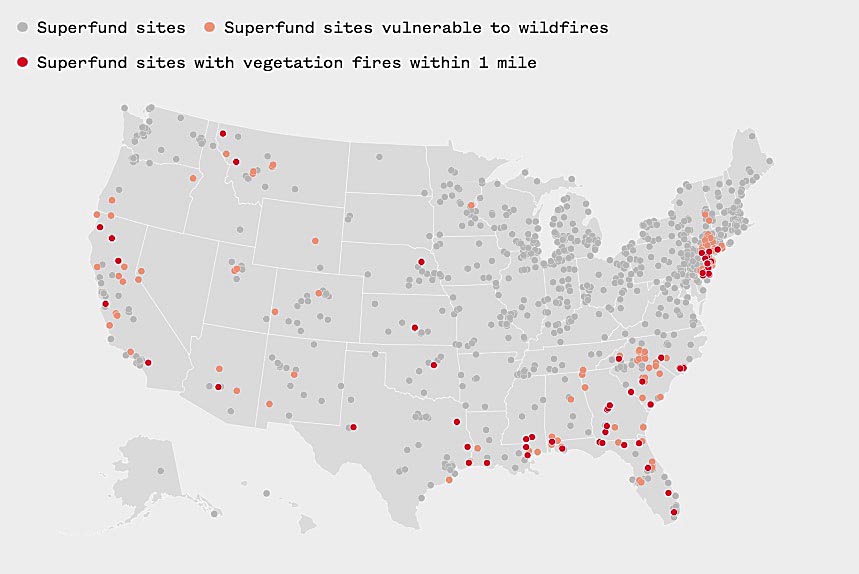
Vulnerable Superfund sites: Fire data is based on NASA and NOAA satellite infrared imaging and represents vegetation fires detected from June 2018 to May 2020. Cleaned-up Superfund sites are included on this map because, according to the Government Accountability Office, these sites may still contain contaminants after remediation is finished. Sources: U.S. GAO, NASA and National Oceanic and Atmospheric Administration. Graphic: Jiachuan Wu and Elliott Ramos/NBC News
In Montana, with five threatened sites, the temperature has warmed by 2.7 degrees over the past 70 years, substantially more than the nation as a whole, according to the 2017 Montana Climate Assessment. From 1970 to 2015, according to research published by Climate Central, that warming drove an at least tenfold increase in the number of wildfires larger than 1,000 acres in Montana, a greater percentage increase than in any other Western state.
The Kootenai National Forest, which holds Libby’s asbestos-contaminated woods in the area known as OU3, endured its largest wildfire on record—the 25,000-acre Caribou Fire—in 2017. But that fire was some 50 miles away from the Superfund site. The following year OU3 faced a much closer blaze, the Highway 37 Fire, which firefighters held to just 71 acres. That fire burned just outside the boundary of the contaminated forest.
“Climate change is driving increased severe, extensive fire behavior. We’re seeing more and more large, dramatic, destructive fires,” said Don Whittemore, a fire incident commander from Colorado who helped the Forest Service, EPA, state and county leaders put together their plan for managing fires in OU3.
“They’ve had a bunch of large fires on the Kootenai and in northwest Montana in the last couple years,” he said. “I can say it’s a landscape primed for fire. It is set to burn. It’s ideal to burn.”
Libby: A wakeup call
The Highway 37 Fire outside Libby started July 19, 2018, along the highway, where sparks and hot engines often lead to wildfire. Nolan Buckingham’s Asbestos Wildland Fire crew donned their respirators in case the fire crossed the boundary into the contaminated forest and were on the blaze in less than 10 minutes.
Given the extreme health hazards presented by a forest contaminated with highly toxic asbestos, there was no margin for error under extremely difficult conditions.
“That fire really put people out of their comfort level, even if it wasn’t in OU3,” Buckingham said.
As the fire roared uphill, the respirators made it hard for the firefighters to keep up. Luckily, a spot where the steep slope flattened out briefly a quarter mile up that hill gave them the break they needed. “We were able to catch it,” Buckingham said.
[perfectpullquote align=”full” bordertop=”false” cite=”” link=”” color=”” class=”” size=””]“The amount of organic material that’s liberated from a large fire is extraordinary. Now, throw into that a cancer-causing material. To me, that’s really, really scary.” —Don Whittemore, fire incident commander[/perfectpullquote]
For the next several days, aircraft bombed the fire with water constantly as Buckingham and his team set up hoses and sprinklers and, at one point, burned away vegetation before the fire could get to it. Contractors with heavy equipment helped them build a fire line around the blaze. The fire was finally declared contained July 31.
“We learned a lot from the Highway 37 Fire,” Nate Gassmann, the district ranger for the Kootenai National Forest, said, including strategies for containing fires and quickly decontaminating the crew members after their shift.
Still, when the contaminated forest’s fuel buildup and steep topography align with warm dry weather, Whittemore, the fire incident commander, said he worries the area could see far more than 70 acres burning.
“Given the right alignment—50,000 plus acres in a day,” said Whittemore, who has studied OU3 in detail and led large firefighting teams across the West.
“It’s got the fuels. It’s got the topography. It just needs the weather alignment,” he said. “And if you’re cognizant and aware and thinking about climate change on a global, national, landscape level, it’d be irresponsible not to think that that’s a strong possibility. You have to plan for the worst-case scenario. Because more and more, we’re not only seeing worst-case scenarios, we’re seeing events that exceed worst-case scenarios.”
Planning for ‘potential impacts of climate change’
Two years before the Highway 37 Fire, Whittemore, the incident commander, read through the Libby Asbestos Response Plan and other documents that EPA had asked the Forest Service to prepare. He noticed little acknowledgement of what he’d been seeing in his decades fighting fires throughout the West—the warming climate was making fires larger and more resistant to suppression.
Whittemore said small test burns and fires in laboratory settings that have been conducted by those agencies don’t reflect what would happen with the asbestos, smoke and ash if a large, intense fire sent a smoke column from OU3 high into the atmosphere.
“The amount of organic material, period, that’s liberated from a large fire is extraordinary,” he said. “Now, throw into that a cancer-causing material. To me, that’s really, really scary.”
That smoke could affect communities far from Libby, he said.
“They didn’t appreciate downwind impacts to places like Whitefish, to Glacier National Park, across the border into Waterton National Park or other parts of Canada,” Whittemore said of the plans. He said he hopes a final cleanup study now underway will consider those areas far from Libby.

Toxic release: Aerial response to the fire near near Libby, Montana, was intense. The forest here is contaminated with highly toxic asbestos. Photo by USFS
More than two years after the Highway 37 Fire, the EPA, the Forest Service and the Libby Asbestos Superfund site’s owner, W.R. Grace & Co., are still working on a feasibility study of cleanup options, which was expected next year but has been delayed until late 2022 or early 2023.
Libby’s asbestos-filled forest surrounds the mine where, until 30 years ago, W.R. Grace mined vermiculite, a mineral valuable in insulation and lawn and garden products. The vermiculite was also filled with Libby amphibole and tons of that asbestos were released every day from Grace’s operation, coating the miners, the town and the forest.
In 2008, Grace was ordered to pay $250 million for future cleanup costs. Several years earlier government prosecutors had brought criminal charges against company executives, who they claimed knew how deadly their operation was. The executives were acquitted and, in the years since, most of the Superfund operating units in and around Libby have been cleaned up. But Grace, the EPA and the Forest Service are still figuring out what to do with the asbestos-filled forest.
While the EPA has not previously looked at the effects of a warming climate and increasing droughts on the threat posed by the contaminated forest, the agency will do so as part of the final cleanup study, Dania Zinner, the EPA’s remedial project manager for the Libby site, wrote in an emailed response to questions. “Ongoing discussions about potential impacts of climate change on the site, including fire behavior modeling, are continuing.”
Caitlin E. Leopold, director of corporate communications for Grace, said the company was working with the EPA on the plan for the forest.
“The Superfund framework does include climate change considerations as part of the process in accordance with the EPA,” Leopold said. “Grace is continuing to work through the feasibility process with the agencies.”
Zinner said that the plan would consider the dangers posed to residents of Libby and beyond. “EPA and partners are considering any type of situation that could have an impact on human health risks at the site now and into the future,” she wrote.
Recalculating wildfire threat
Entering this year’s fire season, officials in EPA Region 9, the region that includes California, Nevada and Arizona, updated fire contingency plans for remote Superfund sites, which are mostly abandoned mines.
“We also have been monitoring—and will continue to monitor—fire behavior closely to track threats to Superfund sites, as well as other sensitive infrastructure,” Michael Alpern, a spokesman for the region, said.
A spokeswoman for Shahid Mahmud, head of EPA’s National Mining Team, said that as a result of the more frequent and larger conflagrations, including the Carr Fire, cleanup plans for former mines are now designed with wildfires in mind.
[perfectpullquote align=”full” bordertop=”false” cite=”” link=”” color=”” class=”” size=””]“We don’t have another 500 firefighters to call, we have the 20.” —Nathan Gassmann, Kootenai National Forest[/perfectpullquote]
Emergency protocols addressing wildfire threats are reviewed every year, and have become more urgent recently, the spokeswoman said.
But wildfire experts and climate scientists said that while it’s possible to reduce the threat, it’s not feasible to eliminate it.
Mines will drain acid as long as their waters encounter sulphur-bearing minerals; radioactivity can persist deep in contaminated landscapes for thousands of years; and much of the asbestos in the contaminated forest outside Libby will remain there as long as the trees do.
For sites where no polluter can be made to pay and the EPA lacks cleanup funds, the agency will need to design protections that shield the sites from wildfires as long as the contamination remains. And wildland firefighters and other emergency responders near Superfund sites in places like Libby will don their protective equipment, hold fire lines and hope they can prevent almost unfathomable environmental catastrophe.
In Libby, can the forest ever be cleaned up?
The contaminated forest in Libby surrounds the mine where, until 30 years ago, W.R. Grace mined vermiculite, a mineral that expands up to 30 times its size when heated, making it valuable as an insulation, soil conditioner and a fertilizer additive.
The ore was filled with Libby amphibole, a particularly toxic combination of asbestos fibers. The plant that milled the vermiculite pumped out thousands of pounds of dust every day, between 20 and 40 percent of which was asbestos.
Dust coated the miners, came home on their clothes and drifted by the ton onto the nearby town. Residents insulated their houses and fertilized their yards with the asbestos-laced mineral. Leftover vermiculite was used in the track at the high school, baseball fields and local playgrounds.
Since then, more than 400 people in Libby have died from mesothelioma, asbestosis, lung cancer and other diseases brought on by asbestos exposure. Thousands more have been sickened with the asbestos-related diseases that are almost always a death sentence.
There is no safe exposure level for Libby amphibole and symptoms can take decades to arise, so physicians expect to be treating new cases for years to come.
After beginning an investigation into the spate of asbestos-related deaths in Libby in 1999, the EPA opened an office to oversee the cleanup there and requisitioned X-ray machines, devices to test lung function and other equipment to set up a medical clinic—an unheard of step for the agency.
The EPA workers responding in Libby discovered not only far more lung disease than they anticipated, but also learned that their agency had produced repeated reports noting how deadly the asbestos in Libby was, yet had done nothing to warn the town.
A year after it opened its office in Libby, three senior EPA officials made another rare move—requesting that the agency’s inspector general investigate how it had failed to protect the area’s citizens from a toxin it had known for decades was deadly.
‘Asbestos-laced trees’ are unique fire hazards
In the years since the $250 million settlement with W.R. Grace in 2008 and the subsequent acquittal of its executives on charges that they knew they were contaminating the town with deadly asbestos, most of the homes and contaminated sites in Libby have been cleared of the contaminated vermiculite.
But the forest surrounding the mine, where hundreds of tons of asbestos-filled dust fell, remains filled with the deadly fibers.
The asbestos-laced trees present a unique hazard for Forest Service firefighters, only 20 of whom are trained and equipped with respirators to fight fires in Superfund Operable Unit 3.
“We don’t have another 500 firefighters to call, we have the 20,” said Nathan Gassmann, the district ranger for the Kootenai National Forest. “We need to respond tactically, knowing we have that as a limitation.”
Those limitations include the respirators, which can make firefighters feel like they’re scuba diving in a forest.
Jeserek, the Kootenai National Forest fuels planner who has been working with the respirators since the specialized firefighting program in OU3 began, said they leave firefighters at between 60 and 70 percent of their normal work capacity.
“Simple things like hiking become difficult,” Jeresek said.
In addition to restricting firefighters’ ability to breath, he said, the masks limit their ability to see, hear and even smell—all senses firefighters depend on.
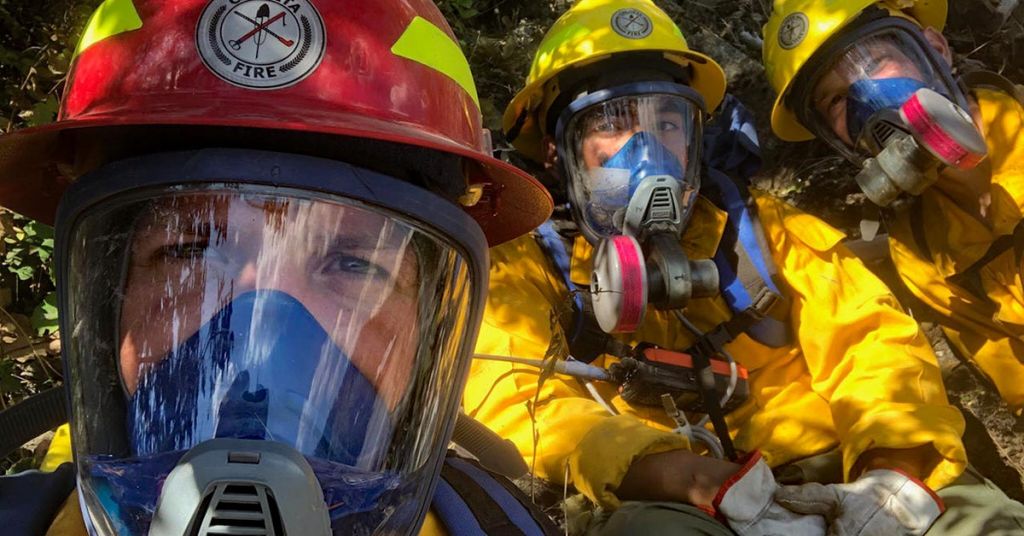
Fire break: Nolan Buckingham (left) led a crew fighting the Highway 37 Fire outside Libby, Montana, that included Jaime Garcia and Aaron Turner. Photo courtesy of Nolan Buckingham
To help offset those challenges during times of high fire danger, the Forest Service positions a helicopter in Libby that can drop water on flames in the unit just a few minutes after they’ve been sighted. Other air resources prioritize OU3, too, so even tiny blazes around Libby receive extensive air attacks to make up for the lack of a critical mass of firefighters on the ground.
Most firefighters working deep in forests, where water is hard to come by, smother flames with dirt and contain blazes with firebreaks dug down to mineral soil, but in OU3 those techniques could fill the air with asbestos, so the primary firefighting tool there is water. Studies show wet asbestos has difficulty becoming airborne.
Whittemore, the wildfire incident commander, understands why every blaze in OU3 must be snuffed fast, but worries that its tiny crew of firefighters will eventually be outmatched. He has seen teams with hundreds of firefighters fail to contain an exploding wildfire.
“There will be a disastrous fire, period.” he said. “I think you’re irresponsible to look anywhere in the western landscape and not expect a disastrous fire could, will, occur there.”
In Libby, some residents doubt that the forest can ever be cleaned up.
“We discussed this 18 years ago,” said Gayla Benefield, an activist who led the fight to clean up Libby and hold Grace accountable for the contamination from its mine. “Most everyone that worked at the lumber mill got diagnosed. That’s what rattled everybody up there.”
Benefield recalls getting a Christmas tree from a nursery that stored its trees in one of the sheds near Grace’s mine.
“The clouds of dust that blew off that thing as we drove it home on our car, I’ve never seen anything like it,” she said.
They rolled the tree in the snow outside their house to clean some of the dust off it before bringing it inside and decorating it.
Benefield’s parents and husband all died of asbestos-related illnesses, and she has had cancer three times herself. She said she wasn’t heartened by the research that showed less than 10 percent of the asbestos liberated in a fire in OU3 would travel in the smoke, or by the air quality monitors set up in Libby when wildfires burn there.
“Ten percent coming over the town is probably more than Grace itself put on the town,” she said. “They just can’t have a big fire anywhere here, especially in the forest around the mine. ”
Columbia Insight is publishing this story in collaboration with InsideClimate News, a nonprofit, independent news organization that covers climate, energy and the environment. You can subscribe to the ICN newsletter here.
InsideClimate News senior editor Michael Kodas is the author of Megafire: The Race to Extinguish a Deadly Epidemic of Flame, which was named one of the 20 best nonfiction books of 2017 by Amazon. He is the former deputy director of the Center for Environmental Journalism at the University of Colorado Boulder.
InsideClimate News reporter David Hasemyer is co-author of the Dilbit Disaster: Inside the Biggest Oil Spill You’ve Never Heard Of, which won the 2013 Pulitzer Prize for National Reporting, and co-authored the 2016 Pulitzer Prize finalist series “Exxon: The Road Not Taken.”





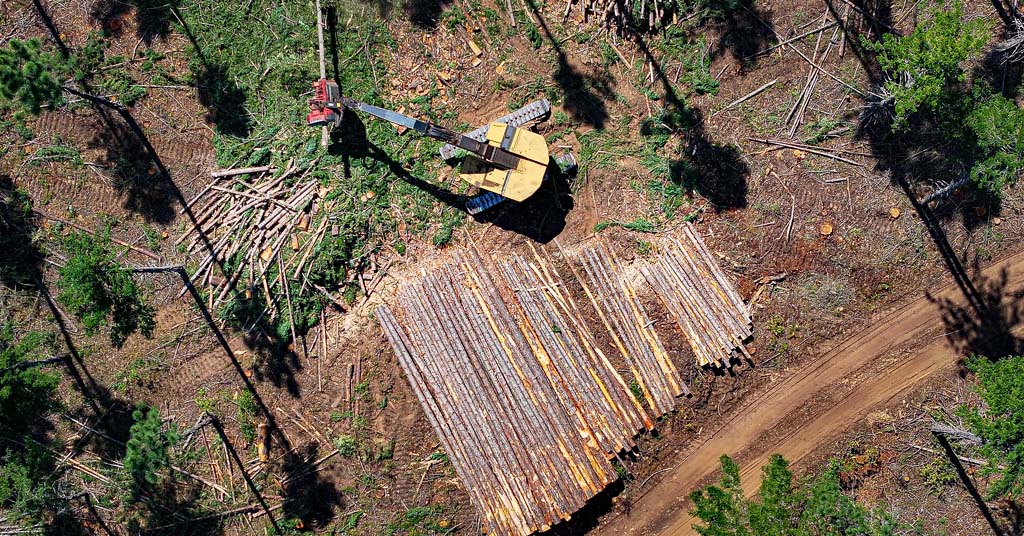
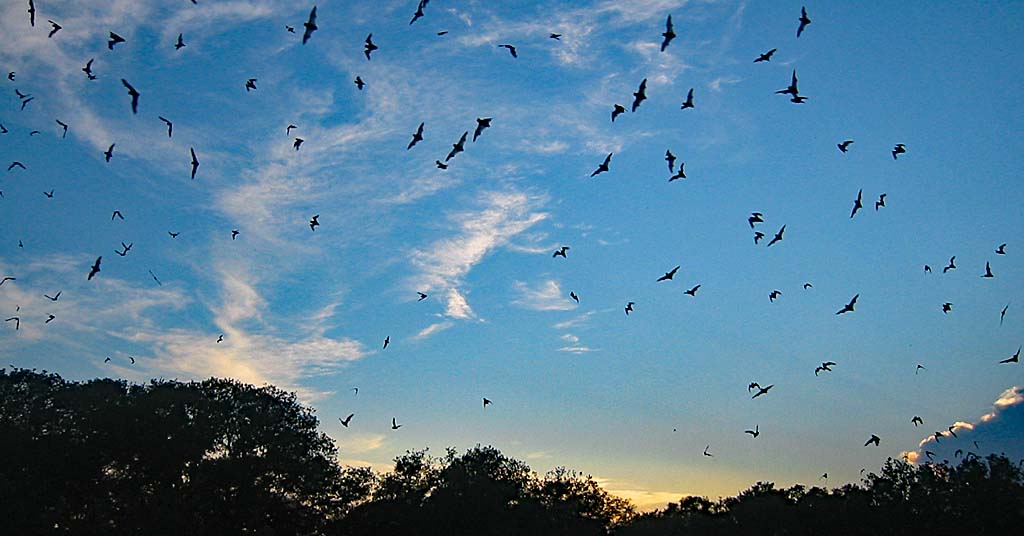
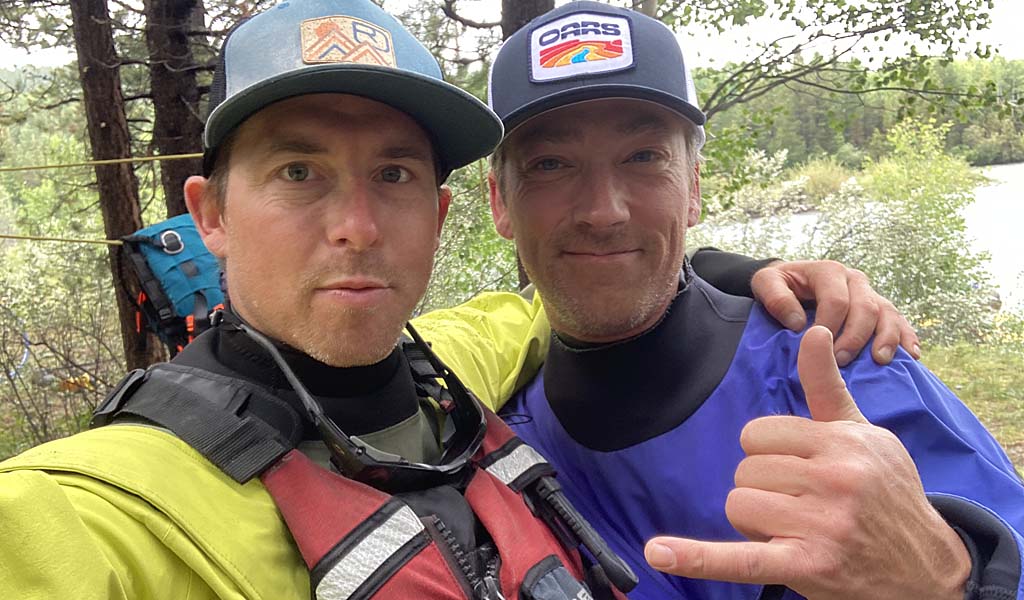



Thank you for this article. A tragic reality at best. But infinitely more disturbing that the EPA was aware of the danger and did nothing to alert the citizens being impacted.
I found the information particularly alarming personally having worked for the USFS on the Libby district for two seasons, including fire fighting (with zero special equipment).
[…] “prosperity” of the second industrial revolution with its toxic sludge of fossil fuels, PCBs, asbestos, lead in paint and gas, and so many plastics. This polluting of our ground, water, and air was all, […]
[…] “prosperity” of the second industrial revolution with its toxic sludge of fossil fuels, PCBs, asbestos, lead in paint and gas, and so many plastics. This polluting of our ground, water, and air was […]
[…] “prosperity” of the second industrial revolution with its toxic sludge of fossil fuels, PCBs, asbestos, lead in paint and gas, and so many plastics. This polluting of our ground, water, and air was all, […]
[…] “prosperity” of the second industrial revolution with its toxic sludge of fossil fuels, PCBs, asbestos, lead in paint and gas, and so many plastics. This polluting of our ground, water, and air was all, […]
[…] “prosperity” of the second industrial revolution with its toxic sludge of fossil fuels, PCBs, asbestos, lead in paint and gas, and so many plastics. This polluting of our ground, water and air was […]
[…] of the second industrial revolution with its toxic sludge of fossil fuels, PCBs, asbestos, lead in paint and gas, and so many plastics. This polluting of our ground, water […]
[…] of the second industrial revolution with its toxic sludge of fossil fuels, PCBs, asbestos, lead in paint and gas, and so many plastics. This polluting of our ground, water […]
[…] “prosperity” of the second industrial revolution with its toxic sludge of fossil fuels, PCBs, asbestos, lead in paint and gas, and so many plastics. This polluting of our ground, water, and air was […]